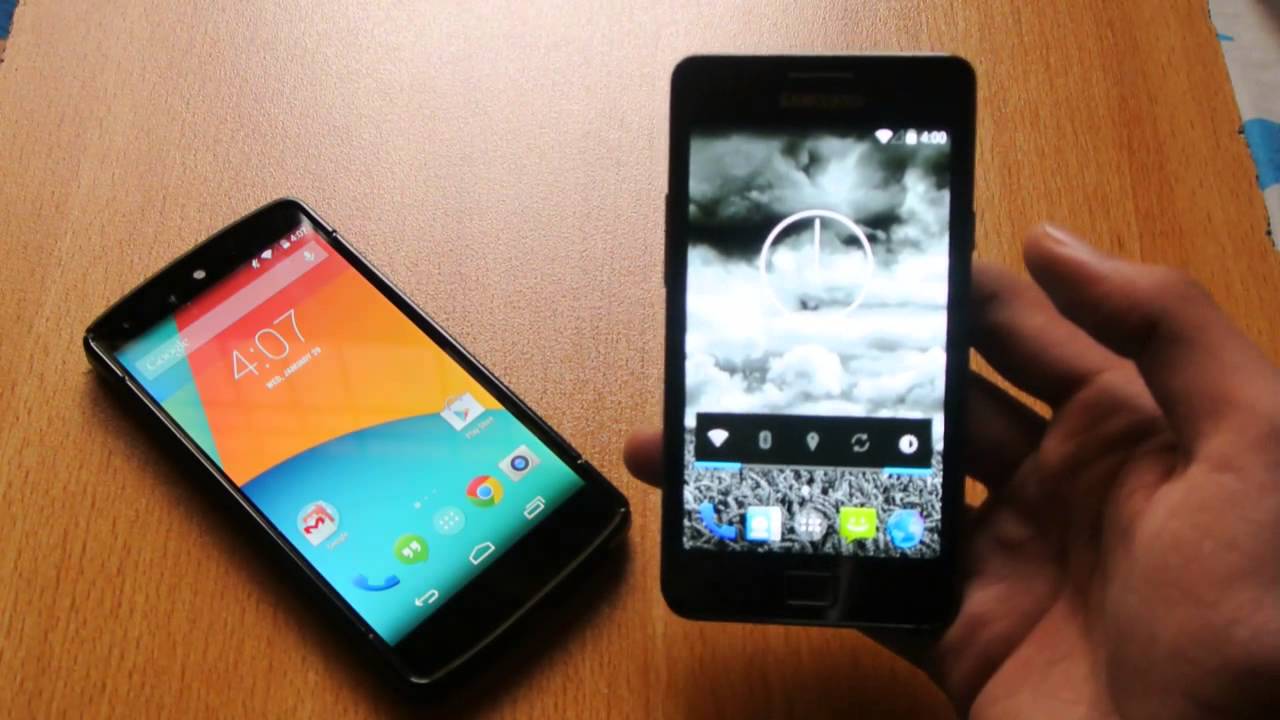
Introduction
Android Kit Kat, officially known as Android 4.4, was a significant update to the Android operating system. Released in 2013, it brought numerous improvements and new features that enhanced the overall user experience. This article will cover the history of Android Kit Kat, its key features, and the phones that ran on this version of the operating system.
History of Android Kit Kat
Android Kit Kat was announced by Google on June 25, 2013, during the Google I/O conference. The name "Kit Kat" was chosen as a nod to the popular British chocolate bar, which is a favorite among many tech enthusiasts. This naming convention was a departure from the previous naming conventions that used desserts like Ice Cream Sandwich and Jelly Bean.
The development of Android Kit Kat focused on improving performance, security, and user experience. It included several under-the-hood changes that made the operating system more efficient and stable. One of the major updates was the introduction of ART (Android Runtime), which replaced the Dalvik runtime environment used in previous versions of Android. ART provided better performance and reduced memory usage.
Key Features of Android Kit Kat
ART Runtime
ART replaced the Dalvik runtime environment. It compiled apps into native machine code at install time, resulting in faster app performance and reduced memory usage.
Google Play Services
This update saw significant improvements in Google Play Services, which provided a unified platform for various Google services like Google Maps, Google+, and Google Cloud Messaging.
Material Design
Although Material Design was officially introduced with Android Lollipop (5.0), it was first seen in the preview versions of Kit Kat. This design language aimed to provide a more cohesive and intuitive user interface across all Google products.
Enhanced Security
Android Kit Kat included several security enhancements such as better encryption methods and improved sandboxing of apps to prevent data breaches.
Google Now Integration
Google Now, a virtual assistant similar to Siri or Cortana, was deeply integrated into the operating system. It provided users with personalized information based on their location, search history, and other data.
Improved Multitasking
The update included better multitasking capabilities with the introduction of a new "Recent Apps" screen that allowed users to easily switch between open apps.
Better Battery Life
Android Kit Kat included several power-saving features designed to extend battery life. These included features like "Doze" mode, which put the device into a low-power state when it was not in use.
Enhanced Camera App
The camera app received several improvements including better low-light performance and more intuitive controls.
Popular Android Kit Kat Phones
Nexus 5
The Nexus 5, released in October 2013, was one of the first devices to run on Android Kit Kat. It featured a 4.95-inch Full HD display, a Qualcomm Snapdragon 800 processor, and a 2300mAh battery.
Nexus 7 (2013)
The second-generation Nexus 7 tablet also received the Android Kit Kat update. It boasted a 7-inch Full HD display and a powerful Qualcomm Snapdragon 600 processor.
Samsung Galaxy S4
Although the Galaxy S4 was initially released with Android Jelly Bean, it received the Android Kit Kat update in early 2014. It featured a 5-inch Full HD display and a powerful Qualcomm Snapdragon 600 processor.
HTC One (M7)
The HTC One (M7), released in early 2013, received the Android Kit Kat update later that year. It featured a 4.7-inch Full HD display and a powerful Qualcomm Snapdragon 600 processor.
LG G2
The LG G2, released in September 2013, also received the Android Kit Kat update. It boasted a 5.2-inch Full HD display and a powerful Qualcomm Snapdragon 800 processor.
Sony Xperia Z1
The Sony Xperia Z1, released in September 2013, received the Android Kit Kat update shortly after its release. It featured a 5-inch Full HD display and a powerful Qualcomm Snapdragon 800 processor.
Motorola Moto X
The Motorola Moto X, released in August 2013, received the Android Kit Kat update later that year. It featured a 4.7-inch HD display and a powerful Qualcomm Snapdragon S4 Pro processor.
Google Nexus 10
Although not as widely popular as other devices listed here, the Google Nexus 10 tablet did receive the Android Kit Kat update. It boasted a 10-inch Full HD display and a powerful Samsung Exynos 5 Octa processor.
Impact of Android Kit Kat
Performance Improvements
The introduction of ART runtime provided better performance for apps, making them run smoother and faster.
Security Enhancements
The update included several security enhancements that improved the overall security of the operating system, reducing the risk of data breaches and malware attacks.
User Experience
The integration of Google Now and Material Design elements provided a more intuitive and personalized user experience, enhancing the overall usability of Android devices.
Hardware Advancements
Many devices that received the Kit Kat update saw improvements in hardware capabilities such as better battery life, faster processors, and higher-resolution displays.
Developer Support
The update provided developers with new tools and APIs to create more complex and engaging apps, further expanding the capabilities of Android devices.
Future Developments
As technology continues to advance, future versions of Android will likely build upon the foundations laid by Kit Kat. With each new release, we can expect further improvements in performance, security, and user experience. The integration of emerging technologies like artificial intelligence, augmented reality, and 5G connectivity will shape the future of mobile devices and operating systems.
Exploring Android Kit Kat phones provides a glimpse into the past while also highlighting the ongoing evolution of mobile technology. As we move forward into an era dominated by AI-driven assistants and high-speed networks, it is essential to appreciate how far we have come and what innovations lie ahead for handheld devices.
